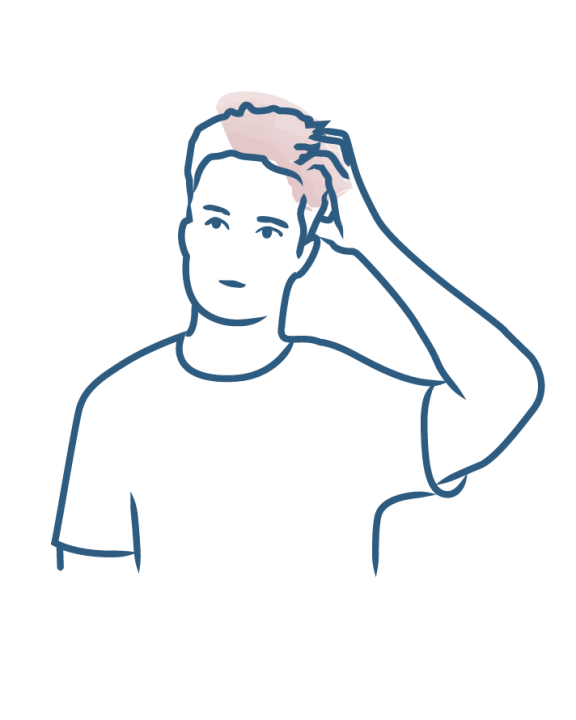Causes of itching: why do we scratch?
Sun Allergy

Sun Allergy
Sun allergies are photodermatoses, i.e., skin diseases related to sun exposure. They appear essentially during clear weather, hence the term sun allergy. There are several types of sun allergies but all have red lesions and itching that can be very intense in common. Most of the time, the diagnosis of sun allergies is clinical, based on a precise questioning of the patient and a complete skin examination. The treatment of sun allergies is both curative, to relieve symptoms quickly, and preventive, to avoid recurrence.
What are the main forms of sun allergies?
The two main types of sun allergies are:
Benign sun allergies
This form of sun allergy is particularly frequent and affects mostly young women, between 25 and 35 years of age. The lesions related to sun allergies are very itchy and take the form of small red pimples that appear within twelve hours of the first significant sun exposure of the year. The spots related to sun allergies are mainly located on the neckline and forearms. The face is affected. Stopping exposure to the sun allows benign sun allergies to improve within a few days. The summer usually continues without any problems as if the skin has gotten used to the sun. On the other hand, benign sun allergies tend to recur every year.
Polymorphous Light Eruption
This form of sun allergy is rarer than benign sun allergies. It affects both men and women, and at all ages. As its name indicates, polymorphous light eruption is accompanied by lesions that vary in size and appearance: small spots, large spots, red plaques reminiscent of hives or eczema... Lesions appear within two days of sun exposure. Polymorphous light eruption is a primarily facial sun allergy. Other parts of the body such as the arms can also be affected. Stopping sun exposure allows an improvement in the polymorphous light eruption but be careful, with this type of sun allergy, the problem persists throughout the period of sun exposure (the summer). Again, there is a risk of recurrence or even worsening of the sun allergy from one year to the next.
What are the causes of sun allergies?
A question that often comes up in cases of sun allergies is: Why does it itch?
Sun allergies are caused by the sun. It is an allergy to the sun that causes spots and itching. Benign sun allergies depend on ultraviolet A (or UVA) while polymorphous light eruptions depend on ultraviolet B (or UVB).
Genetic factors may also be involved in the development of a sun allergy.
How do you treat sun allergies?
The first treatment for sun allergies is of course to stop sun exposure.
Most often, the doctor will prescribe oral anti-histamines and topical cortisone to relieve the itching and discomfort of the patient with the sun allergy. In addition, using dermo-cosmetic care products specifically formulated to limit itching related to sun allergies and increase skin comfort can help.
The treatment of sun allergies is also preventive. In fact, as soon as the sun comes out, it is recommended to apply a highly effective sun protection product against UVA and UVB rays every two hours. Avoid exposure to the sun between 12:00 and 4:00 p.m., wear clothes that cover your skin, sunglasses and a hat. These few rules of photoprotection are generally accompanied by oral treatments: photoprotective food supplements, based on carotenoids for example, and synthetic antimalarials (on medical prescription) in certain cases. Phototherapy sessions are sometimes proposed.
How can you treat sun allergies naturally?
To relieve the itching associated with sun allergies, apply cold to the affected areas: thermal spring water, the back of a spoon, a fan, a bag of frozen peas, etc.
Some natural treatments such as homeopathic protocols can be used to treat sun allergies.
In terms of diet, load up on anti-oxidants present in large quantities in fruits and vegetables, and omega 3s contained in canola oil, flaxseed oil, camelina oil and small oily fish such as sardines or mackerel.
More information
- Discover Pruritus gravidarum or itching related to pregnancy
Causes of itching: why do we scratch?
Pruritus gravidarum or itching related to pregnancy
- Discover Aquagenic Pruritus
Causes of itching: why do we scratch?
Aquagenic Pruritus
- Discover Senile Pruritus
Causes of itching: why do we scratch?
Senile Pruritus
- Discover Dermatological Pruritus
Causes of itching: why do we scratch?
Dermatological Pruritus
- Discover Pruritus sine materia
Causes of itching: why do we scratch?
Pruritus sine materia
Our care routines
Itching on the scalp
Dermatological expertise
To better understand your skin and hair, discover our exclusive content and innovative care products designed to improve your quality of life..

